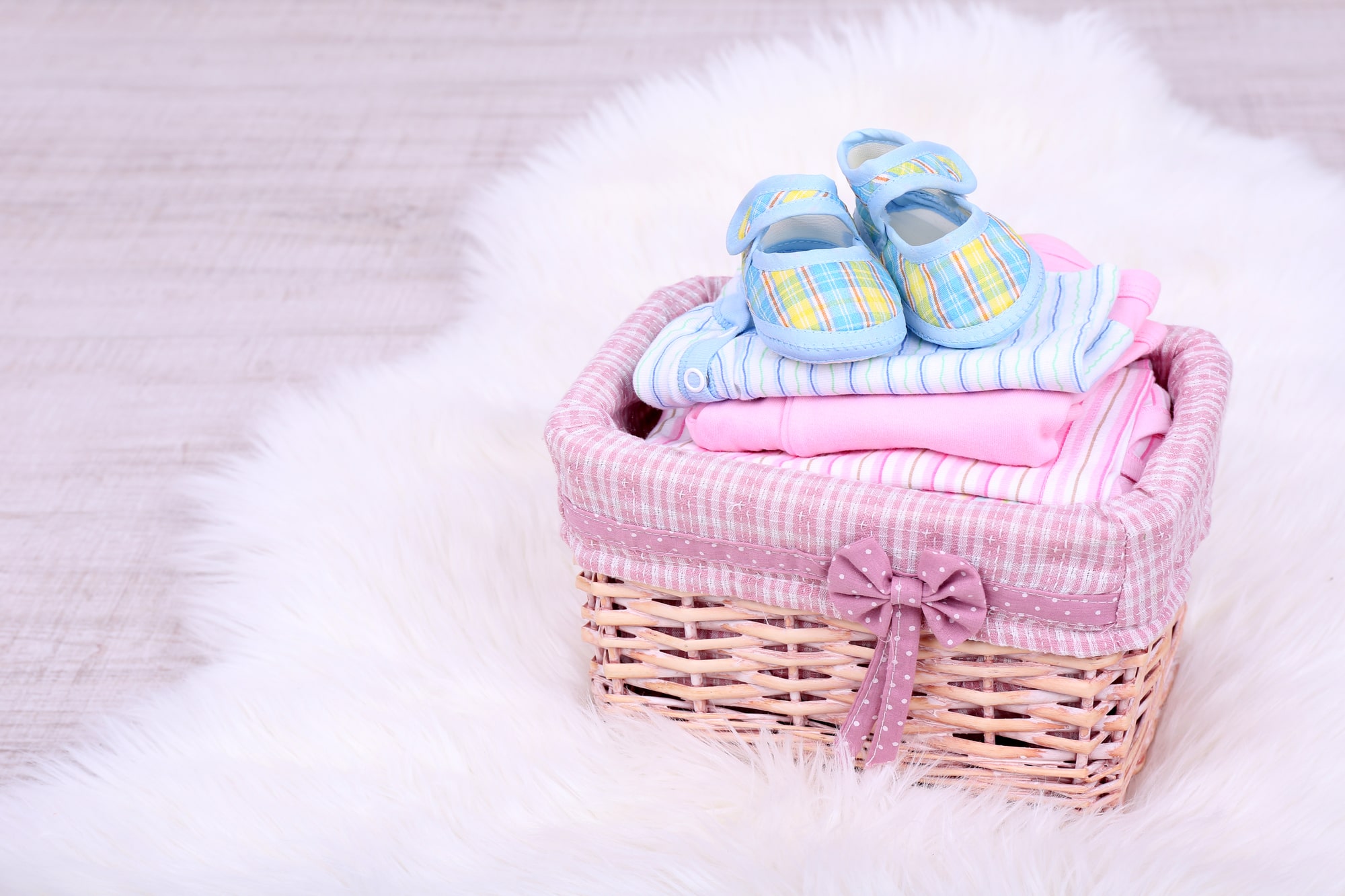New parents are often sent swooning over the pastel-colored outfits soon to adorn their darling little one, from the teeny, tiny tops to the itty, bitty pants. I’ve certainly been there!
In no time, though, that wardrobe turns into a mess of overstuffed drawers and mismatched onesie sets. Sounds familiar?
Between baby showers, generous donations from friends, and the occasional splurge from our pockets, it’s easy to feel overwhelmed by the Herculean task: figuring out how to organize baby clothes. This is especially true since babies grow fast and need new outfits.
As a new mommy, you already have enough to worry about without agonizing over the best way to fold baby clothes or how to deal with having no closet in nursery rooms.
Let’s dive right into making you an expert in organizing your baby’s clothes.
Disclosure: Some of the links below are affiliate links. This means that, at zero cost to you, I will earn an affiliate commission if you click through the link and finalize a purchase.
How to Organize Baby Outfits
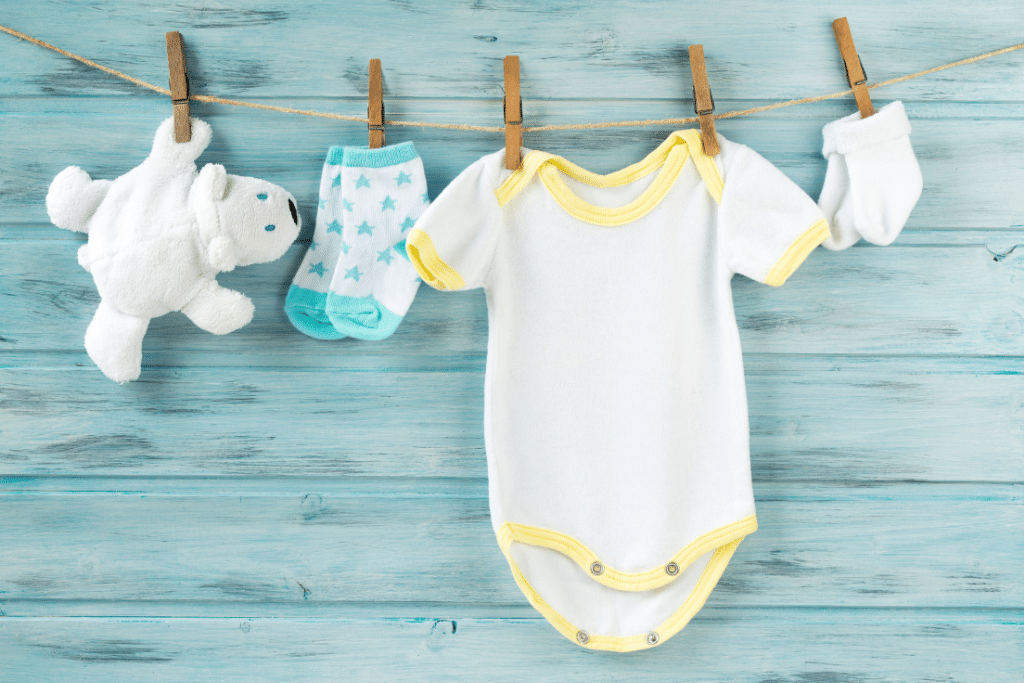
Before you go about purchasing hangers, new dressers, or any other organizing equipment, you have to get a handle on just how many clothes you’re dealing with.
Donate Outgrown Clothes
Just as you likely received donations of outgrown clothes, return the favor in kind as your friends and family have little ones. They’ll appreciate the thought, and you’ll clear out space to help you keep things orderly.
Suppose you’d like to put a little cash back in your pocket. In that case, you could try offloading baby clothes in good condition on your local swap and shop Facebook group or to a business that specializes in reselling gently used clothing.
There are even some online consignment sites, like Mommy & Me or Kidizen, that will gladly take unwanted outfits off your hands in exchange for cash or store credit.
Toss Out or Repurpose Stained Clothes
Babies are messy! Part of the reason little ones tend to accumulate such large clothing stocks is that they go through more daily outfit changes than a Cher concert.
When something ends up with a permanent stain, cut it into dishcloths or toss it in the trash. There’s a good chance baby would have grown out of it in the next few months anyway.
Sort by Age Range
In many cases, you’ll end up with a nice variety of newborn, baby, and toddler clothes before your little one has even made their entrance into the world. And you should! There will be days when a tiny pair of bloomers that once fit perfectly are a little too snug just a couple of weeks ago.
Set yourself up for success by creating age categories for any clothes you’re planning on keeping. This part doesn’t have to be nice and neat. Just grab a few hampers or cardboard boxes you have lying around and label them as follows:
- Newborn
- 0-3 months
- 3-6 months
- 6-9 months
- 9-12 months
- 12-18 months
- 18-24 months
If you want to invest in or DIY your own baby closet organizer ideas, you can just hang those off of the sides of the bins you’re using as temporary storage. There are some charming options on Etsy!
Decide on Hanging Baby Clothes vs. Folding
Once you have a better idea of how you plan on sorting your baby clothes, dresser vs closet may be the next choice you have to make.
It might seem like a minor difference, but creating a system and routines helps you maintain your organization for the long term. Part of that is knowing which types of clothes you plan to fold and which you plan to hang.
So, what baby clothes do you hang up? A common way of sorting is hanging up tops, sweaters, coats, matching outfits, and dresses, but folding onesies, nighties, pants, shorts, and skirts.
Alternatively, you can hang up anything that you’d consider a “full outfit,” like dresses or sets you put together while folding individual pieces, like t-shirts, jeans, and soft shorts. With this method, it’s easy to grab a favorite outfit or mix things up with pieces that match multiple items in a baby’s wardrobe.
Folding Baby Clothes: How to Organize Baby Clothes in Drawers
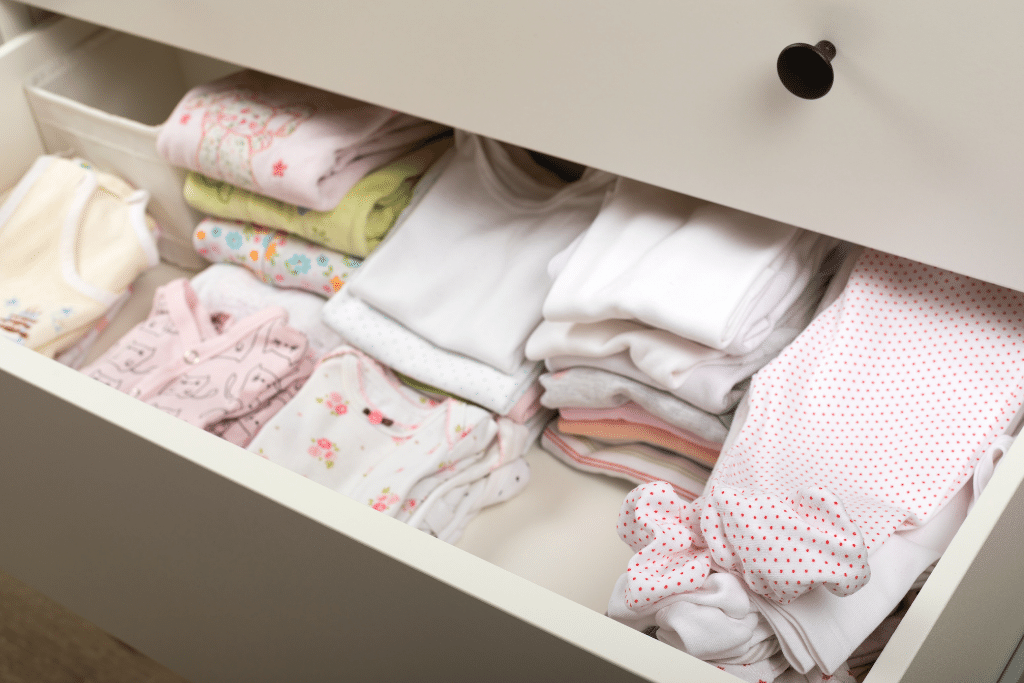
Whether it’s fabric bins or a chest of drawers, some kind of dresser is a must-have for organizing your baby’s clothing. Even if you don’t have a closet in your nursery, you can still tackle the job with enough drawer space and the proper folding technique.
How to Organize Baby Dresser Drawers
Start by designating individual drawers for particular types of clothing. Don’t mix up socks with shorts or tops with tutus. Inevitably, you’ll end up rummaging through each container looking for a particular hand-knit sweater from Grandma Greta, only to discover it was underneath a pile of (now unfolded) onesies.
Consider stenciling, hand painting, or applying vinyl labels to each drawer to help you remember where everything goes. This is also helpful for future babysitters who may need an emergency change of clothes because of a midafternoon diaper blowout or spit-up incident.
How to Fold Baby Clothes to Save Space
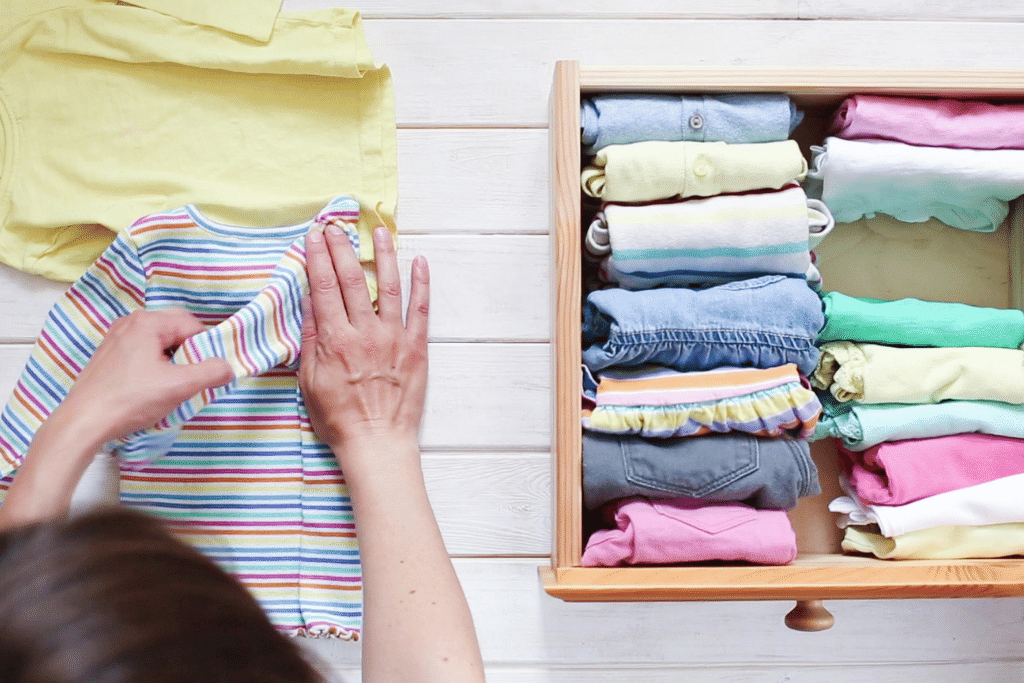
Instead of folding baby clothes the same way as adult clothes, try the Marie Kondo “file folding” method. This reduces the amount of space each article takes up and gives you a bird’s eye view of all the outfits in a particular drawer as soon as you open it.
As a general rule, fold sleepers and onesies into fourths, which gives them enough width to stand up on its edge. Then, place horizontal “files” one behind the other.
When organizing baby pants, fold them in half vertically, so the legs are lined up. Fold again horizontally, so the ankle cuff and waistband are together. Fold it horizontally once more, and voila! You can now fit way more clothes than you thought possible into a small space.
Drawer dividers are an invaluable asset when folding baby clothes to save space. There are several different styles you can choose from, like clear acrylic bins that you can remove one at a time for easy access to their contents or a fabric option that folds up for storage when not in use.
How to Fold Newborn Clothes
Because you’ll likely have your newborn in one-piece outfits for the first couple of months, you can get away with putting newborn clothes in stacking craft boxes like these, reducing your folding time significantly.
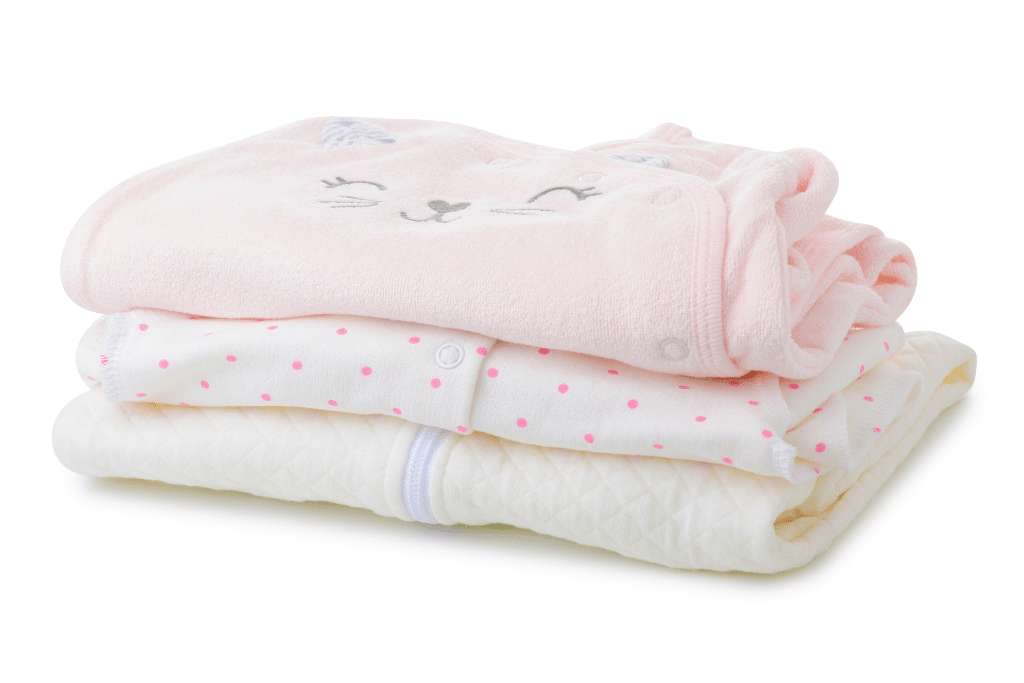
Instead of worrying about file folding, hold the sleeper or onesie up, with the front-facing you. Tuck the sleeves back, lay the bottom half on a flat surface (so the feet are oriented upwards, and you can see the back of the suit), and lay the top half down on top of it.
By doing it this way, and in clear bins, you can create four stacks of clothes in one 12×12 box, each with three or four one-piece getups. When you want to pick an outfit, you have a full side view of each stack, letting you quickly pick out something for your little one to wear without undoing all your hard work.
Hanging Baby Clothes: Baby Closet Organizer Ideas
For the true infant fashionistas, a tidy closet is a must-have.
Parents who are fortunate enough not to wonder how to organize baby clothes without a closet should still be mindful of maximizing the available space. Start by adding in a second rail below the first one. Baby clothes are short, so make use of the vertical space!
How to Hang Baby Clothes on Hanger
The size of baby clothes requires some creative solutions for actually keeping it aloft. Start with an appropriately sized hanger. There are many options to match your nursery theme or color, like this pink non-slip velvet set with free closet dividers included!
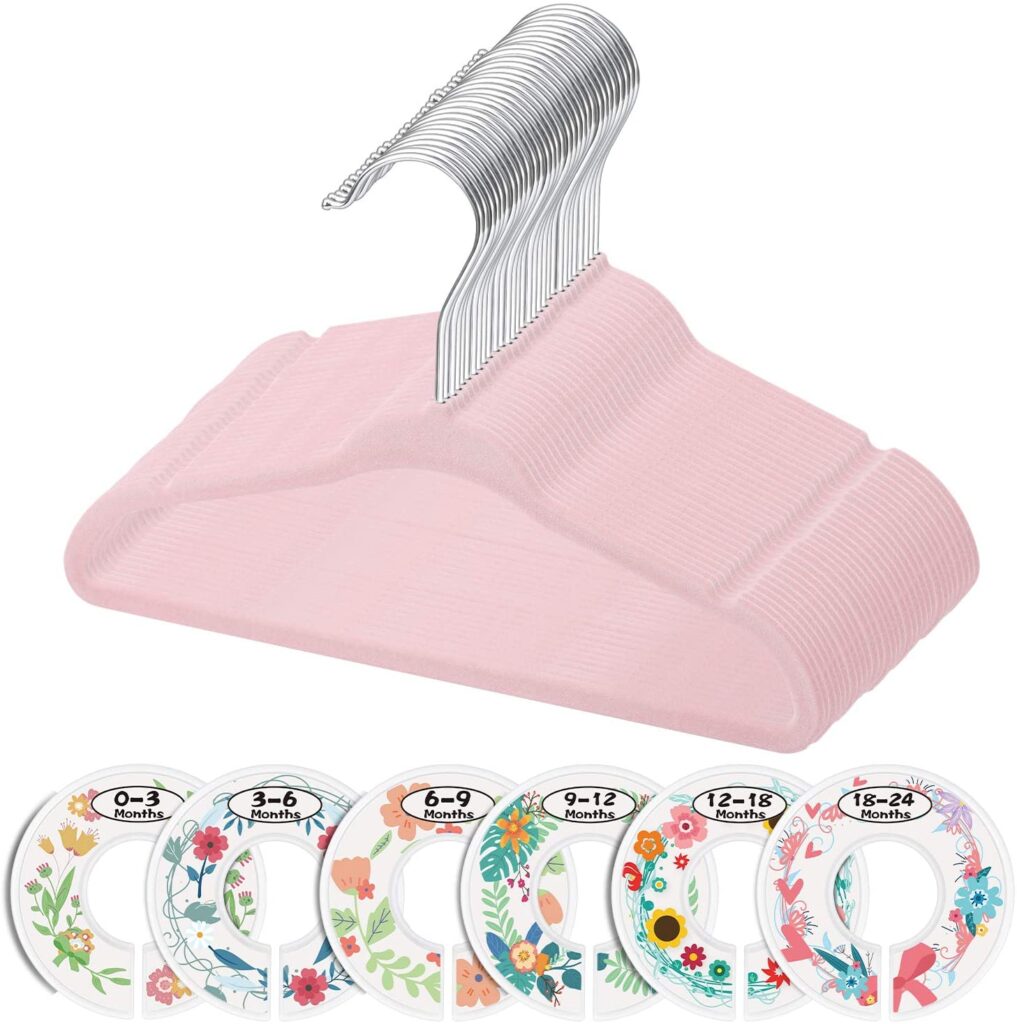
Another option is using a variety of colors designated to a particular age range. If you purchase a pastel-toned multipack, you can organize it according to size without needing extra closet dividers.
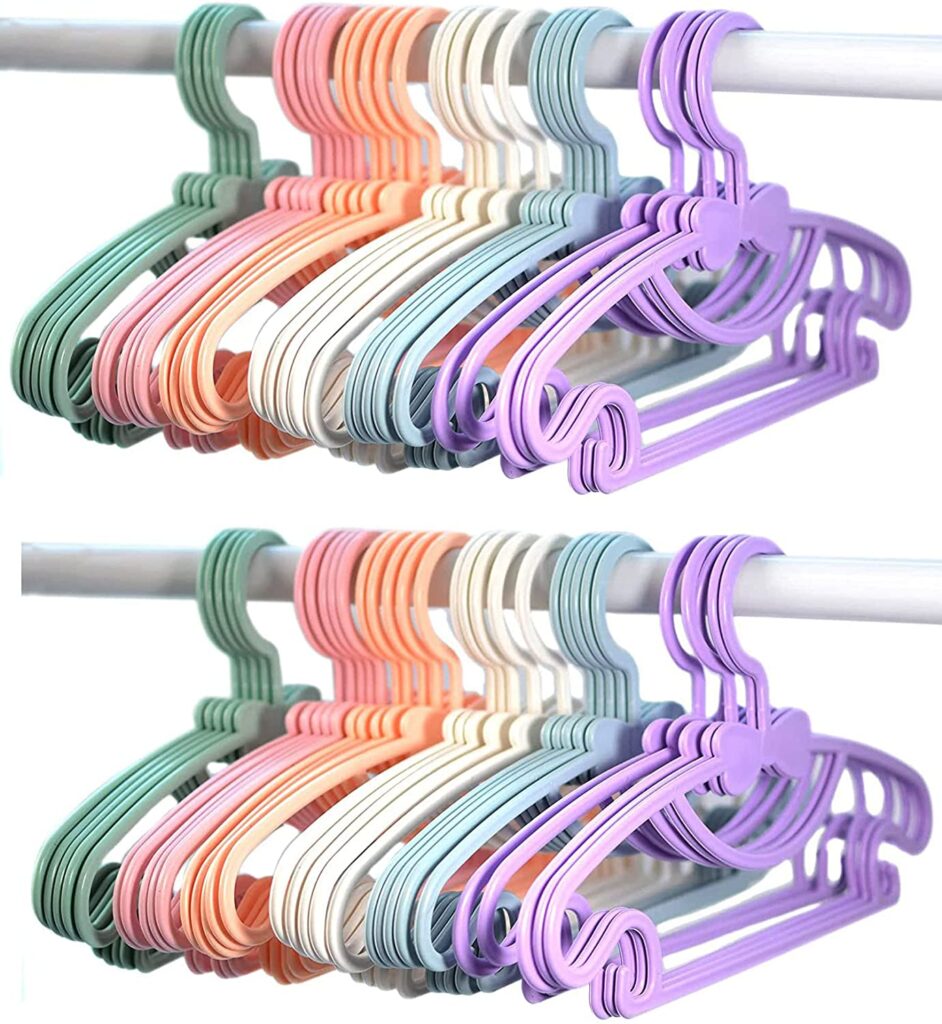
How to Hang Baby Pants
Short, chubby legs are one of the greatest joys of having a newborn, but that lack of length can make it challenging to hang baby pants. Folding them over leaves little space for them to securely stay where they belong, creating a mess of fallen denim and cotton for you to sift through.
Skip the mess and opt for hangers with built-in clips. They’ll grip tightly enough to keep the clothes from falling onto the floor, but not so tightly that you can’t snag a pair one-handed while your bundle of joy occupies the other.
This neutral pack of velvet hangers has detachable clips, so you can swap out the style you need depending on what you’re hanging up.

How to Hang Baby Tops
You’ll hang baby tops the same way that you would adult tops, but be sure to slide the hanger up from the bottom instead of entering through the neck hole. Neglecting to do so can stretch out the shirt, ruining the shape of the collar.
You should also zip-up jackets on the hanger. They’re prone to slip and slide, especially if you’re maneuvering clothes off of neighboring hangers. It’s a little step you can take that will save you from a frustrating search for their cold-weather gear.
How to Hang Onesies
It’s a little unconventional to hang onesies, but there’s a trick that just might convince you it’s worth it to do so.
Instead of hanging them from the top, place both sides of the flap around the bottom of the hanger and snap it together. By doing it this way, you can hang three onesies in one!
How to Organize Baby Shoes
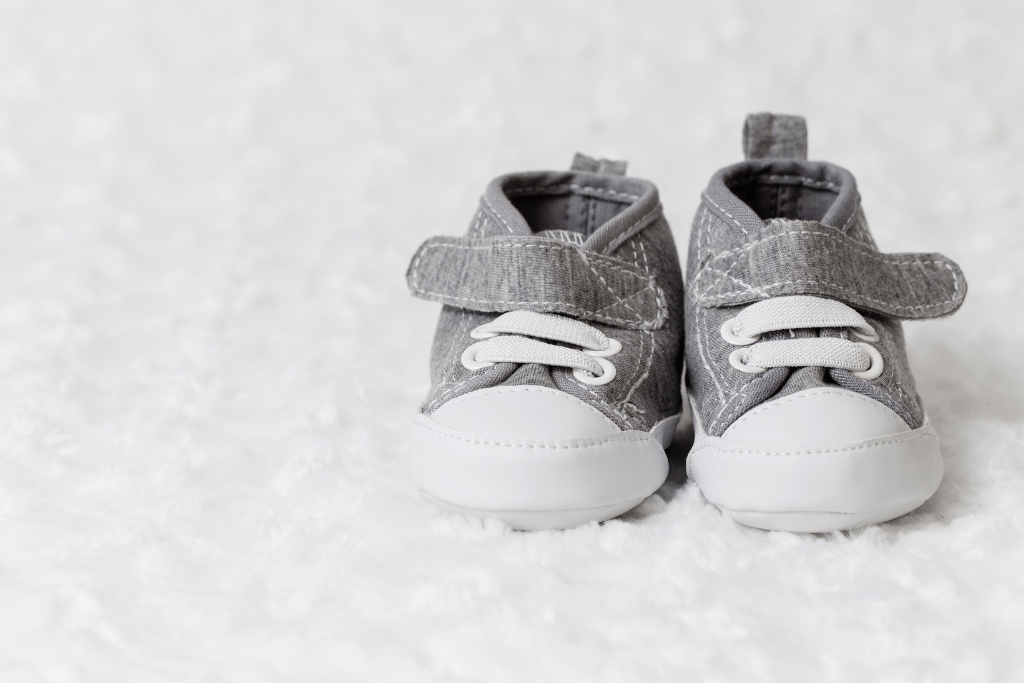
Possibly the cutest of all baby clothes are the shoes. They’re absolutely charming miniature models of the adult version, but despite their small size, they can take up a lot more room than many mommies realize.
The key is to keep a close watch on which pairs your little one has outgrown. As soon as they feel a little tight in the toe, make room for the next size by storing or donating the old ones.
Keep in mind that kids grow out of shoes very, very quickly. Frequently, they’ll look almost as good as new when it’s time to size up. If you’re planning on adding more little ones to your growing family, I highly recommend stashing away hand-me-downs to save you money next time you welcome your new addition.
Baby Shoe Storage Ideas
Whether you prefer to put them on display or stash their little sneakers in hidden bins, here are just a few ideas to help you neatly stow away baby shoes.
Shoe Racks
Once you’ve figured out how to organize baby clothes in dresser drawers and hanging rails, you’ll have plenty of space to add shoe racks to the doors or floors of the nursery closet.
Wall shelves make lovely makeshift shoe racks, as well. Hang them up on the wall between the closet rails or above the dresser, and you won’t take up any valuable floor real estate.
Clear Plastic Boxes
There’s a lot to love about clear acrylic shoe boxes. Not only are the adult-sized ones large enough to hold several pairs of baby shoes, but they also stack easily for vertical storage and make it easy to locate the exact pair you’re looking for.
Keep the boxes on closet shelves or in tidy columns on top of your nursery dresser.
Craft Carts
These catch-all carts are lovely for holding everything from diapers and wipes to bathtime products. They’re also a great storage choice for storing baby shoes because you can rotate sizes as needed.
Keep the ones that currently fit in the top tier, then the following two sizes up on the decks below. When the baby’s foot grows, pack up the newly outgrown shoes, then rotate the larger ones up a level.
Wrapping Up
As delightful as hearing the pitter-patter of little feet is, the baby stage can be a chaotic and stressful time for new moms. Now that you’re well-versed in how to fold baby outfits together to optimize your available nursery space, you can spend more time enjoying your newborn and less time hunting through piles of outgrown baby clothes.
If you are thinking through how to design your nursery, check out these 7 beautiful nursery decor ideas.
See you soon!
Hi – I’m Alina and I am a soon to be mom going through the journey of becoming a parent. I am a writer at heart and I love sharing about pregnancy tips and other busy mom hacks.
